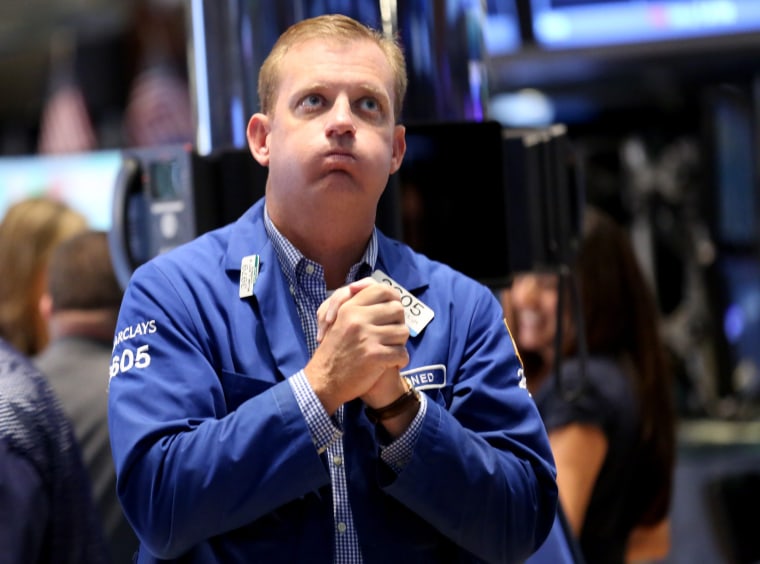U.S. stocks closed sharply higher on Wednesday, partly recovering from the worst start to September in 13 years, as investors eyed calmer global markets, domestic data, and oil prices.
The major averages rallied more than 1.5 percent in the close to end near session highs, with the Nasdaq composite outperforming with gains of 2.46 percent to pull out of correction territory.
The S&P 500 also closed higher out of correction territory, while the Dow Jones industrial average remained in correction. The blue chip index ended three straight days of losses with a gain of 293 points. Apple surged 4.29 percent and Microsoft leaped 3.68 percent to lead nearly all blue chips higher, while information technology led all S&P sectors higher.
Energy turned mildly higher as crude oil recovered to settle up 1.85 percent at $46.25 a barrel. Earlier, crude fell as much as 4 percent to below $44 a barrel after the U.S. Energy Information Administration's weekly report showed oil inventories rose.
"I think that the stock market has been trading in concert with oil prices," said Kim Forrest, senior equity analyst at Fort Pitt Capital.
After a recent rally, crude settled 7.7 percent lower on Tuesday.
This Popular Indicator Says Stocks Have Bottomed
Earlier, the major averages held gains of about 1 percent or more after the Federal Reserve's latest Beige Book said economic activity continued to expand.
"I'm a little disappointed by the Beige Book. I was looking for more robust signs of growth," said Tara Sinclair, chief economist at Indeed. "It does make me wonder whether there's still room for the economy to grow."
The larger factor for investors on the timing of a rate hike remains Friday's nonfarm payrolls report.
"I think more or less what we see is markets digesting last week's rally. Problem is, we're in the lower part of the range," said Adam Sarhan, CEO of Sarhan Capital. The Beige Book is just "one piece of the puzzle" on determining the timing of a rate hike.
Economy Continued to Expand Over Summer, Fed Says in Beige Book
Treasury yields were little changed following the report, with the 10-year yield at 2.19 percent and the 2-year yield holding near 0.72 percent in choppy trade.
The U.S. dollar traded higher against major world currencies, with the euro near $1.12 and the yen near 120 yen against the greenback.
Trading was choppy throughout the day, with the major averages briefly halving sharp opening gains of about 1 percent.
"It appears that fewer people are willing to jump in and bottom fish," said Jack Ablin, chief investment officer at BMO Private Bank.
"The reason we're selling off is there are still sellers in the market who also want to raise cash," said Marc Chaikin, CEO of Chaikin Analytics. "They don't want to do it on weakness like we saw Monday afternoon or Tuesday. ... To me that suggests we are going to head lower."
European stocks closed mildly higher amid U.S. gains and milder declines in Asian stocks. After violent swings, the benchmark Shanghai Composite closed down 0.4 percent, after falling as much as 4.6 percent, as regulators stepped up rescue measures to support a wobbly stock market on Wednesday. Japan's Nikkei closed down about 0.4 percent and the Hang Seng ended down about 1.2 percent.
Fed Missed Rate-Hike Opportunity: Bill Gross
The mainland Shanghai and Shenzhen markets will be closed Thursday and Friday for a public holiday, while the Hong Kong exchange will be closed Thursday.
U.S. stocks closed nearly 3 percent lower on Tuesday for the worst first day of September trade since 2002. The Dow and S&P ended 2.5 percent above lows hit during last week's selloff.
Wednesday's attempted bounce might not be enough to offset a weaker September overall, if history is any guide. Analysis by Bespoke found that following declines of more than 1 percent on the first trading day of September, the S&P averaged a loss of 2.21 percent for the rest of the month, with positive returns just 40 percent of the time.
